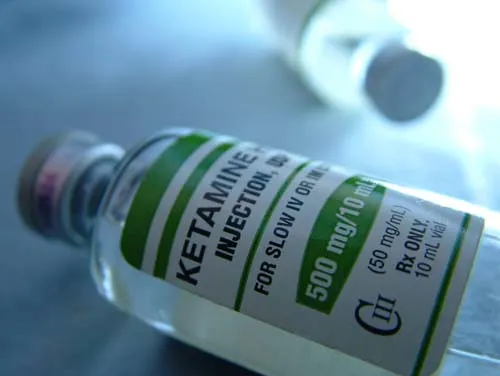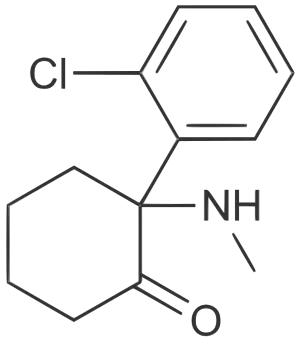Today in high impact science Research News we discuss a publication from Nature titled "Ketamine blocks bursting in the lateral habenula to rapidly relieve depression." Where researchers from Zhejiang University in China have been studying the mechanism behind which Ketamine has its anti-depressive effects.


I am sure many of you know the name of the drug Ketamine, or Special K as it might be called in a "street pharmaceutical" format. It's a fairly commonly used anesthetic in surgeries, as it gives people a trance like state, where the sensation of pain is reduced and also has the convenient effect of causing memory loss. [2], which is perfect for surgery. Its use as a street drug stems from the fact that it also can induce hallucinations, but it also has other effects.
For instance it is a very very fast acting anti depressant compound. With a single dose in as little as 30 minutes it can result in a long lasting antidepressant in people. [3] This has been hypothesized in the past to revolve around ketamine's interaction with the N-methyl-D-aspartate receptor (NMDA Receptor).
NMDA Receptor

The NMDA receptor is actually a glutamate (amino acid) binding receptor, that gets its name because in addition to binding glutamate it also binds very specifically to the compound N-methyl-D-aspartate. It's commonly found in our bodies and is what is known as an excitotoxin, in that it destroys nerve cells, by over exciting them.
Ketamine however, is an antagonist of this receptor, in this case it stops the NMDA receptor from firing.
Mechanism of Action of Ketamine
What the researchers identified is that the blocking of the NMDA receptor by ketamine in a particular section of the brain called the lateral habenula resulted in antidepressive effects in both mouse and rat models.
The researchers explored this phenomenon from a variety of angles, finding increased neuronal firing ("bursting") in the lateral habenula region in depressed brains. Which were not found in non-depressed brains. The researchers also observed that these "bursting" patterns observed could be removed by the addition of an "anti-depressant" concentrations of the Ketamine. An interesting observation but they were not yet satisfied.
They explored further to determine the mechanistic cause of the observed change in neuron firing patterns. They found through varying the concentrations of ketamine used, that the bursting activity was due to the actions of the NMDA receptors, and also found that the alleviation of bursting could be re-instituted by providing high concentrations of the NMDA receptors normal substrate (NMDA itself).
Impact
The authors have convincingly illustrated that the relationship between neuronal burst firing in the lateral habenula and a depression-like state is strong. They have also shown that the very rapid, anti-depression activities of Ketamine are related to the compounds ability to alleviate that burst firing state. They identified the mechanism by which this happens (blocking the NMDA Receptor) and have opened up a whole new target for the development of future fast acting anti-depression medications, hopefully without the other antithetic like properties of ketamine.
Sources
- https://www.nature.com/articles/nature25509
- https://www.drugs.com/pro/ketamine-injection.html
- https://www.ncbi.nlm.nih.gov/pubmed/10686270
Image Sources
SteemSTEM
If you haven't heard about the SteemSTEM project yet and are reading this post then I highly recommend you take a look into it! The SteemSTEM team has been working for over one year now to promote promote well written/informative Science Technology Engineering and Mathematics postings on Steemit. The project (@steemstem) seeks to build a community of science and technology lovers on steemit and ade in nurturing the growth of blogs that will make steemit a go-to source for science/tech information, news, and just generally fascinating content.
To learn more about the project please join us on discord, we are always looking for people who want to help in our quest to increase the quality of STEM (and health) posts on our rapidly growing platform!